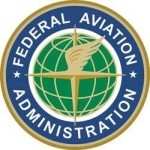Wear Ocurred In Only 50 Hours Of Flying
The FAA has issued a Special Airworthiness Information Bulletain
for Extra EA 300 airplanes after abnormal wear was found on a
rudder cable during a scheduled 100 hour inspection.
File Photo

During the inspection conducted on an Extra EA 300/L airplane,
the rudder cable assembly, part number 50155, was found to have its
rudder cable frayed where only three of the seven wire strands
remained. The cable was inspected 50 hours prior and had shown no
evidence of wear. This discrepancy was located on the aft-right
side of the aircraft where the rudder cable protrudes out of the
airframe fabric near the rear-most fairlead. Per MIL-W-834201, the
cable is constructed using a 7 x 19 configuration such that 6 outer
strands of 19 wires are laid around a center strand core of 19
wires. To avoid excessive bending, the cables are guided using
fairleads that maintain changes in direction to less than 3
degrees.
These aircraft models use stainless steel cables in their flight
control system. A general service history has shown the use of
stainless steel cables in aircraft control systems results in
premature wear and has been a factor in minor incidences as well as
catastrophic failure.2 A current trend is underway in the aviation
industry to move away from the use of stainless steel cable for
primary flight control applications, except where marine operations
are performed.
Although stainless steel has a greater resistance to corrosion,
it is not corrosion proof. Stainless steel is very difficult to
inspect for corrosion and wear damage. It does not provide a
build-up of residue when deterioration occurs or show discoloration
and other subsequent warning signs advantageous for inspections.
Stainless steel cable is considerably stiffer than galvanized cable
and has a lower bending fatigue resistance in flight control
operations. It has a higher friction coefficient that results in
increased wear every time the cable is flexed. Over its service
life, stainless steel cable becomes more stiff, leading to
increased abrasion wear on the inside as well as the outside of the
cable.

On September 15, 2011, Extra Aircraft issued Engineering Change
Order AM-300-11-27. This order states they will discontinue the use
of stainless steel cables as standard equipment and will use
galvanized cable in the near future.
Until the transition to galvanized cable occurs, the FAA
recommends all owners and operators comply with the cable
inspection requirements outlined in the Extra Service Manual. In
addition, they recommend inspecting the bond of the heat shrink
tubing at each 50-hour inspection of the rudder 2 cable system and
doing a tension release inspection of the rudder cable assembly by
disconnecting one end of the cable. Special attention should be
given to the areas where the cable goes through the fairleads.
Also, care should be given during the cable inspection on aircraft
where smoke oil operations are done. Before inspecting, the cable
should be thoroughly cleaned using an approved solvent.
The Extra EA 300/L service manual has instructions to install
800 mm (31.50 inches) and 600 mm (23.62 inches) of the protective
hose onto the rudder cable. However, the 800 mm (31.50 inches)
callout is in error. The correct length should read 500 mm (19.69
inches). This is not considered an airworthiness issue because the
amount of liner supplied in the rudder control cable kit is
sufficient to meet Extra Aircraft’s design requirement to
protect the cable from the airstream. Extra Aircraft will correct
the improper callout length with the next regular revision of the
service manual.
 Airbus Racer Helicopter Demonstrator First Flight Part of Clean Sky 2 Initiative
Airbus Racer Helicopter Demonstrator First Flight Part of Clean Sky 2 Initiative Diamond's Electric DA40 Finds Fans at Dübendorf
Diamond's Electric DA40 Finds Fans at Dübendorf ANN's Daily Aero-Term (04.23.24): Line Up And Wait (LUAW)
ANN's Daily Aero-Term (04.23.24): Line Up And Wait (LUAW) NTSB Final Report: Extra Flugzeugbau GMBH EA300/L
NTSB Final Report: Extra Flugzeugbau GMBH EA300/L Classic Aero-TV: 'Never Give Up' - Advice From Two of FedEx's Female Captains
Classic Aero-TV: 'Never Give Up' - Advice From Two of FedEx's Female Captains




